Howdy Grow Appalachians! Even though it’s not officially summer yet, it sure feels like it! Or maybe not…with all the rain we’ve had! We’ll be seeing the mercury top out at 95 this weekend, so I guess that’s summer enough.
We’re a few weeks in to our new newsletter formats (please let us know how you like them!), and last week’s publication was a not-entirely exhaustive but still extensive list of common garden pests, how to identify them, and some basic Integrated Pest Management tips and tricks. You can read the article in its entirety here, or at the end of this post (Yes, I did base the title off an upcoming Harry Potter spin-off movie). Piggybacking off of last week’s newsletter, for the blog this week we’re looking at some new pests that aren’t insects, as well as reiterating a few of the key players- “destroyers” might be too harsh of a word, yes?
Here we go.
The Many-Legged:
Snails/Slugs: I will be the first to admit that I am 100% grossed out by slugs. Their slimy trail…ick!!! Slugs love lettuce and other tender plants/seedlings, as well as ripening strawberries and tomatoes. Look for irregularly shaped holes in your leaves. They often do their damage at night, so do damage control then: hand pick them, or plant fragrant herbs such as dill and rosemary nearby. Use row cover, or if you’re growing in containers, apply a salt ring around your pot; they won’t go near it!
Mexican bean beetle: These are easily confused with ladybugs or the Asian beetles. Mexican bean beetles are copper colored with black spots, and no white, the distinct characteristic between them and the ladybug/Asian beetle (they have white). Bean beetles skeletonize leaves, which means they consume the entire leaf matter within the veins, leaving only the veins intact. Obviously they dig beans, given their name, but they sometimes also consume cabbage and kale.
Potato beetle: Look for a rounded hard shell with black and tan stripes, and a red head with several black irregularly placed spots. Like many beetles, the adults burrow in the winter and re-emerge in the spring, where they feed and breed. Larva are 1/2″ long and red and fat with black heads. Potato beetles target all Solanaceous crops, including tomatoes, peppers, eggplant, and potatoes, and they can defoliate an entire plant very quickly.
Cucumber beetle: They look very similar to the potato beetles mentioned above, except they have yellow and black stripes and are just a tad longer in length. There are two species of the cucumber beetle: spotted and striped. The spotted species have 11 spots in the eastern US and 12 in the western US. Spot them (no pun intended!) underneath leaves or in germinating seedlings. They love curcurbits: squash, cucumbers, melons, and also beans and corn. One particularly troublesome tidbit about cucumber beetles is that they transmit bacterial wilt, which is devastating for a garden. If you spot any of these beetles, do what you can to reduce the populations! Pests is one thing; disease and pests at the same time is just awful.
Squash vine borer: Unfortunately, many gardeners do not realize there’s a vine borer infestation until it’s too late. Vine borers inflict their damage within the plant; seemingly healthy plants wilt almost overnight. Adults, after emerging in the spring from the pupal stage, lay their eggs on the stems and once the larva hatch, they burrow into the stem to feed on the plant matter inside; they remain for about a month. Protect your squash and pumpkins with row cover when they start to grow vines, and never plant curcurbits in the same area year after year. Butternut varieties are somewhat resistant.
Tomato hornworms: Green and squishy, these guys are hard to miss; look for the white diagonal stripes along their backs and the distinctive “horn” at their posterior end. The worms themselves are the larval stages of the Manduca quinquemaculata moth, and they’re not harmful. Hornworms feed on tomatoes, tomatillos, peppers, and eggplant. Look for them towards the tops of plants or under leaves. Hand pick them and stick them in a dish of soapy water, or do what our director David does and snip them in half with pruning shears. (It’s pretty awful, I know).
- Vine borer larvae with damaged plant
- Mexican bean beetle adult
- Potato beetle
- Hornworm
- Vine borer adult
- Spotted cucumber beetle
- Striped cucumber beetle
The Four-Legged:
There’s plenty of fauna that are troublesome in the garden, but for brevity’s sake we’ll look at three: deer, groundhogs, and rabbits.
Deer: My folks have been gardening for as long as I can remember and it’s only been just within the last year, maybe, that they’ve finally gotten a handle on the deer. Deer are indiscriminate garden foragers, as are fawns; since they don’t know what they like yet, they’ll nibble on a little bit of everything. While fencing is the most foolproof way of controlling deer (the route my parents took), if you’d rather seek some additional alternatives, keep your garden or start a new plot close to your house; deer are less likely to wander towards places with higher human traffic. Like with insect pests, use row cover or low tunnels for additional protection. One of our partner sites has used Nite Guard , a device that emits a red flashing light; according to their website, the red flashing light looks like an eye to deer. Remedies like soap, human hair, and pie pans don’t seem as effective as they used to be…or so I read. Plant flowers such as daffodils and poppies in your garden.
Groundhogs: You can’t mistake ’em even if you tried! You won’t see them around in the winter, because they hibernate, but once it’s springtime, they’re out and about, making up for lost time and getting into whatever they can, food-wise. Unlike insects in the garden that have host plants, groundhogs will eat anything (After all, they’ve been asleep for 3 months). One suggestion is to plant a plot just for groundhogs. It sounds really silly, but if you have a patch full of their favorites near their burrows, they may not even get the chance to wander over to your garden. Alfalfa and clover are two options. Or seed those plants in your garden. I also read putting used cat litter into the openings of their burrows…ew? My mom has tried using teaberry gum…that didn’t work. If you do decide to take the fencing route, make sure it’s not a particularly sturdy material- this will discourage climbing.
Rabbits: They’re just so darn cute, right? Unfortunately they’re also notorious nibblers. To protect young plants, fashion chicken wire over them in an arch form. Plant crops such as squash, tomatoes, onions, and potatoes near crops they do like, this may discourage feeding. Repellents such as ultrasonic emitters, flashing lights, etc, work for a short time, but once the critters realize there’s no danger associated with them, they’ll just ignore it. Deer are the same way. If you do choose repellents, move them every few days. Remove any potential hiding places such as brush piles, and keep tall grass mowed.
How do you keep the pests in your garden at bay? Share your ideas, or contact us if you’re just overwhelmed! Your extension agent is also a great resource. Happy gardening! (Take some breaks this weekend, it’s supposed to be a scorcher!)
Resources/Further Reading:
Organic Vine Borer Control from Mother Earth News
Deer-Resistant Plants from the Farmers Almanac
Groundhog Control from Mother Earth News (mildly humorous)


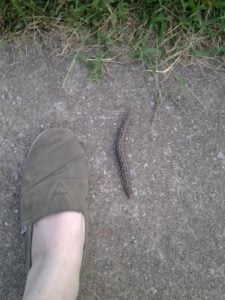
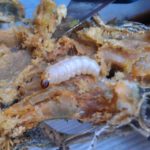

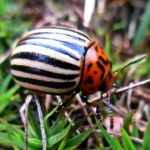

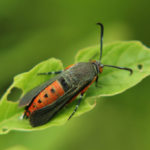
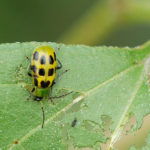
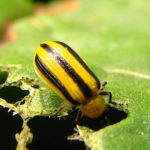

Leave A Comment